
Ducati Diavel Service Manual: Guided diagnosis
Note
The on-screen icons used during this procedure are explained in a table at the end of this section.
The dds diagnosis instrument guides the operator step-by-step through the various diagnostic procedures, providing descriptions and documentation for motorcycle components, wiring diagrams for the electronic systems and information on the locations of specific components.

Turn on the dds diagnosis instrument (1) referring to the paragraph "tester power supply".
Connect the power and diagnosis cable (2) part no. 97900.0227 To the diagnosis connector (f) to the diagnosis socket (3) of the motorcycle.
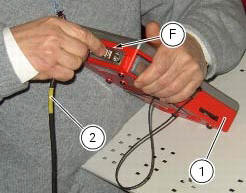
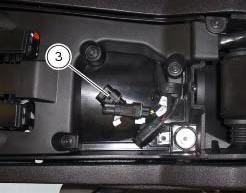
Enter the general functions menu by pressing the icon "menu 1" (a).
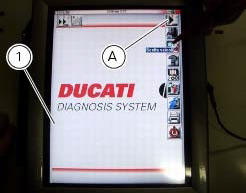
Press the "select vehicle" icon and, on the next screen, press the "select motorcycle" icon; select the motorcycle model and confirm, then select the version and confirm.
Press the icon "select system" to display a list of the bike’s systems that can be analysed.
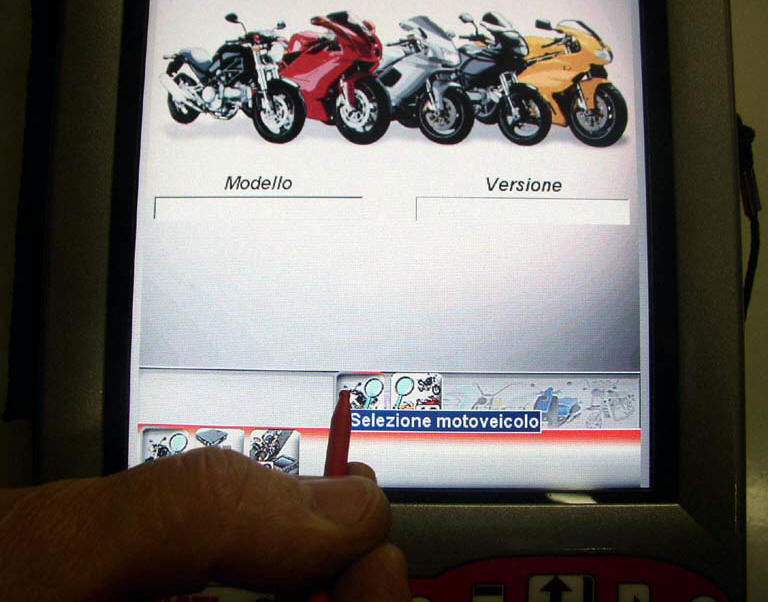
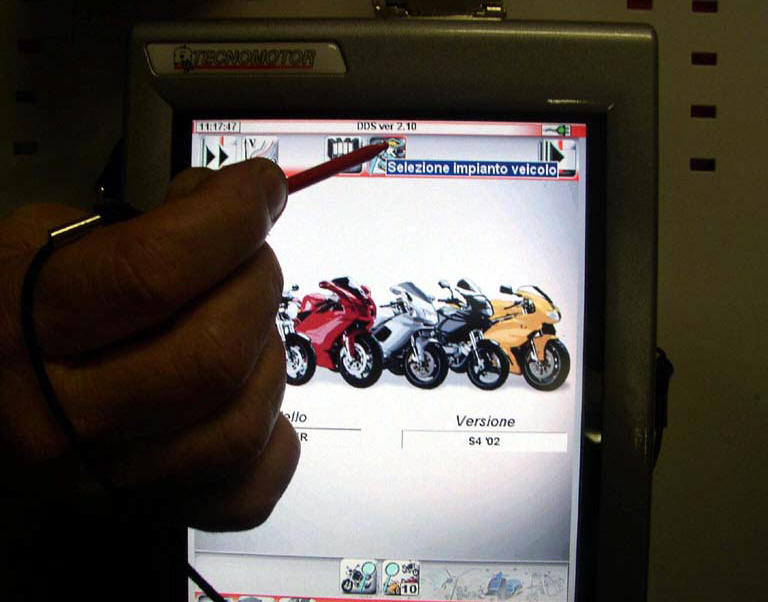
Select one of the options shown in the following picture and press icon "confirm" (b) to confirm it.
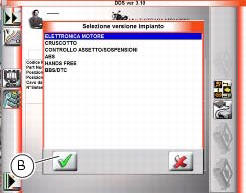
Press the "guided diagnosis" icon (c) to access the corresponding function.
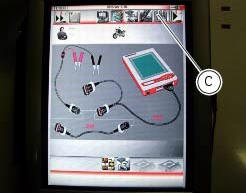
A series of screens are displayed indicating the operations required for correct diagnosis.
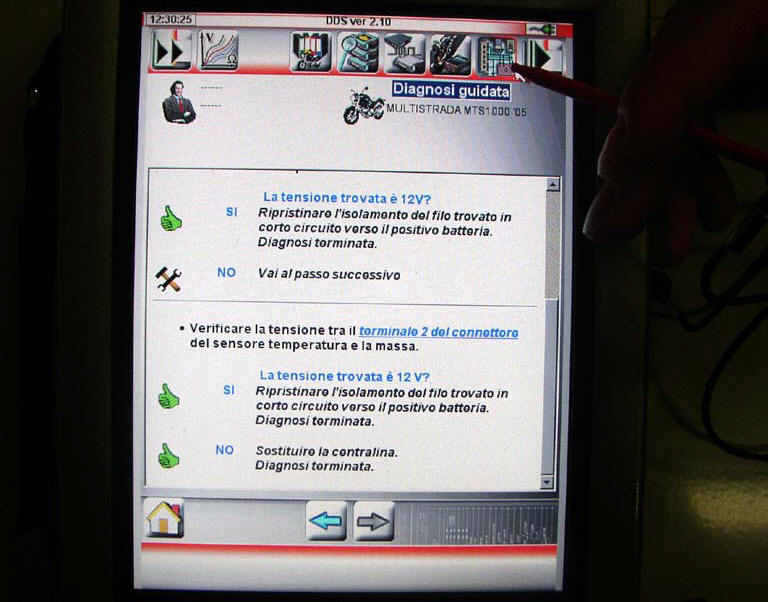
To determine whether the system has any internal problems, you can access the "self-diagnosis" function by pressing the corresponding icon. If any errors are present, the symbol (d) will be displayed. To determine the type of errors present, press the "errors" icon (e). Once errors are detected, it is possible to solve them using the step-by-step diagnosis; press "step-by-step diagnosis" icon (c).
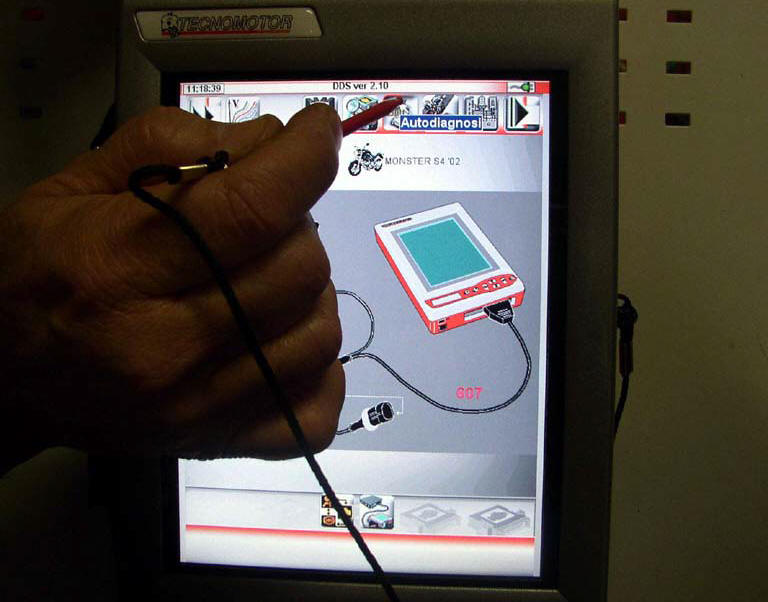
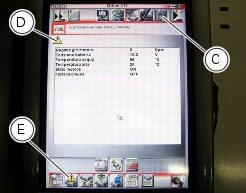
The dds diagnosis instrument will interrogate the electronic control unit and display the parameters analysed with their relative values.

 Fuel pressure test
Fuel pressure test
Note
The on-screen icons used during this procedure are explained in a table at
the end of this section.
Undo the screws (2) and remove the flange cover (1).
Remove one of the two pipes o ...
 Testing the battery charging system
Testing the battery charging system
Note
The on-screen icons used during this procedure are explained in a table at
the end of this section.
You can determine the engine rpm required for generator to produce just
enough current to ...
Other materials:
Removal of the rear shock absorber
Loosen the screws (22) and remove the assembly (34) from the frame.
Loosen the screws (27) and remove the tank unit (s) of the shock absorber
from the support (19).
Hold the lh bush (6) and loosen the rh bush (5) to release the front side of
the shock absorber assembly.
Un ...
Overhaul of the connecting rods
Make the following dimensional checks on the connecting rods:
Clearance with gudgeon pin on assembly.
In the event of excessive wear (sect. 3 - 1.1, Crankshaft), replace the
connecting rod.
The small end bushing must be in good condition and firmly driven into its seat.
Check for para ...
Side stand
Important
Before lowering the side stand, check that the ground
is sufficiently even and firm.
Do not park on soft or pebbled ground or on asphalt melted
by the sun heat and similar or the motorcycle may fall over.
When parking on a slope, always park with the rear wheel on
the downhill sid ...